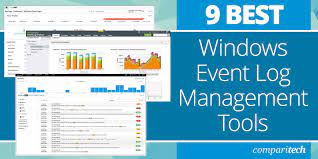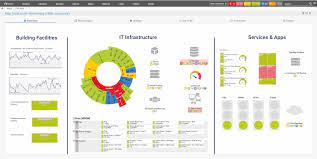5 windows log monitoring tools to monitor your Windows PC

5 windows log monitoring tools to monitor your Windows PC
In today’s article, we are going to be discussing 5 windows log monitoring tools that can help you keep an eye on your system’s performance and health. Let’s get started!
First on the list is Windows Event Viewer, which can offer a wealth of information about what has been happening on your PC. This includes logs from the System, Application, and Security logs as well as errors and warnings. You can filter by time period, source, category, or any other field you wish, making it very easy to find the information you’re looking for.
Sysinternals Livemon is another great option for Windows log monitoring. This software provides a comprehensive view of system performance including CPU usage, memory usage, registry activity, and network traffic. You can also create custom dashboards to track specific areas of interest or see detailed performance data over time.
Next on the list is LogMeIn Rescue Technician (LMRT). LMRT offers a wide range of features to help administrators monitor their systems in real-time. This includes live capture for system logs as well as events such as crashes andolets. You can also use LMRT to backup files and folders as well as remotely manage servers and desktops.
Last but definitely not least is Performance Monitor graphical user interface (GUI) from Microsoft Corporation (MSFT). Performance Monitor provides an extensive set of features for monitoring system performance including cpu utilization, disk I/O operations, process status
windows 10 backup utility
If you’re like most people, you rely on your computer to run your life. You store your important files on it, and you use it to do your work. But if something goes wrong, you need to be able to fix it. That’s where a backup comes in.
Windows 10 includes a built-in backup utility that can help you create a copy of your computer so you can restore it if something goes wrong. Here are five tools that can help you monitor your Windows PC and keep track of its log files:
1. Event Viewer: This powerful tool lets you view logs from all of the services on your computer, including Windows, the Windows kernel, and drivers. You can also use Event Viewer to search for specific events and see information about them, such as the time and date that they occurred.

2. Sysinternals Process Explorer: Process Explorer lets you see which processes are using up resources on your system, including memory, CPU time, and network bandwidth. You can use this information to identify problems with applications or systems on your computer.
3. System Information: System Information provides detailed information about your computer’s hardware and software configuration, including the names of installed applications and drivers. You can use this information to troubleshoot common problems with your computer.
4. Performance Monitor: Performance Monitor lets you monitor key performance indicators (KPIs) in real time so you can identify problems quickly. You can
virtualbox alternative windows
VirtualBox is a popular virtualization software for Windows, but there are other ways to monitor your Windows PC. Here are five log monitoring tools to help you keep track of what’s happening on your computer:
1. Windows Event Viewer: This graphical tool lets you see the events that have happened on your computer, including errors, warnings, and important system messages. You can use it to find out what’s causing problems, or to find out what software is affecting your system.
2. Performance Monitor: This tool lets you track the performance of your computer using counters and graphs. You can use it to find out which applications are slowing down your system, or to see how much memory your computer is using.
3. Sysinternals tools: These tools include Process Explorer and WinDbg. Process Explorer gives you detailed information about the processes running on your computer, while WinDbg lets you view the internal workings of Windows.
4. WMI: Windows Management Instrumentation (WMI) lets you access information about your computer from within Windows. This information can include information about the hardware and software on your computer, as well as the configuration data for the files and folders on your hard drive.
5. System Information: System Information provides a comprehensive view of all the components and settings on your computer, including the status of the operating system, the installed programs, and the hardware configuration.
